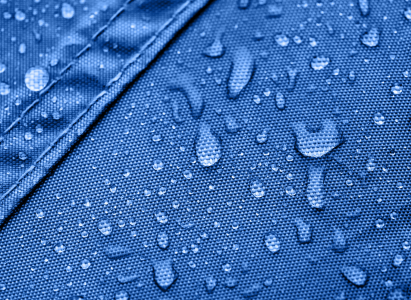Before we begin, here's a handy checklist of some of the essential things you should bring on your camping trip if you know it's going to be raining.
- Waterproof Tent & Tent Repair Kit
- Tarpaulin & Ropes
- Sleeping Bags & Sleeping Mats
- Camping Chairs & Tables
- Waterproof Clothing
- Suitable Lighting
Waterproof Tent & Tent Repair Kit
This is fairly self explanatory, but your tent is the most important piece of camping equipment in your arsenal. It's crucial to make sure that it's going to prevent water from seeping in, so that you don't wake up in the morning inside a newly formed paddling pool. Not all tents offer ample waterproof protection, so you'll need to check the hydro-static head rating of any prospective tents before you buy. Ideally, you should be looking for one with a rating of 3000mm at the minimum.
You should also be wary of any holes accidentally being punched in the lining of your tent, this typically happens during the process of pitching however one of your companions can just as easily trip on a guy-line and cause small tears. Tent repair kits are inexpensive and therefore definitely worth bringing along.
Tarpaulin & Ropes
If you've already bought a tent and don't fancy splashing out on a brand new one for the sake of some extra waterproofing, bringing along some tarpaulin sheets can do just as good a job. In an ideal world, you'll want to position your tent close enough (but not under, in case of lightning & widowmakers) to nearby trees in order to rope up your tarpaulin on an angle in order to allow excess water to travel away from your tent. It's also wise to place another sheet underneath your tent if you're having to pitch your tent on wet soil, as this will cause the base of your tent to become damp over time.
You could also consider bringing a gazebo instead of some tarpaulin, but they're not always as cost-effective as tarp, nor are they as lightweight to carry around.
Sleeping Bags & Sleeping Mats
Sleeping mats will serve as a barrier between the base of your tent and where you're going to sleep. In the event that the base of your tent does end up getting damp, you won't be effected in your sleep thanks to the extra ground clearance from a sleeping mat, not to mention the added comfort benefits. You could also opt for a camp bed, but if you're trying to pack light they aren't always feasible.
In terms of sleeping bags, there are plenty of different styles suitable for camping in the rain, but we'd recommend bringing a mummy style sleeping bag if you have the option. It'll keep your body covered right up to your shoulders, preventing you from getting cold overnight and waking up with a shiver.
Camping Chairs & Tables
Usually, you could get away with sitting around the campfire on some nearby logs, but since they're all going to be completely sodden it's best to bring your own camping furniture. Your own furniture is still prone to getting wet, so you may want to make a designated living area covered by tarpaulin as opposed to sitting directly by a central campfire.
Waterproof Clothing
Chances are you'll already have a waterproof jacket, but a decent pair of waterproof trousers are also worth bringing along, especially if you're planning on going for a walk. A reliable pair of waterproof walking boots wouldn't go amiss either, they'll prevent your socks from getting wet if you misjudge a few puddles. Speaking of puddles, your kids will love them! Consider bringing along a puddle suit and some kids' wellies so that they can have fun splashing about - you're definitely going to need to find ways to keep them occupied, after all!
Lighting
As the night gets darker, the rain will also aid in decreasing the visibility of your surroundings. So, if you happen to need a quick bathroom break deep into the night, you'll need something to help you see. Most people would be tempted to just use their smartphone's torch to light their way, but it's much better to invest in a cheap head torch to avoid the risk of water damage to your phone.
If you fancy reading a book before going to sleep, you'll also need a way to see inside your tent. Lots of tents come with tiny hooks along the roof which are designed to hold up a camping lantern, but you don't need to rely on hooks as lanterns are just as effective when placed in a nearby corner.


